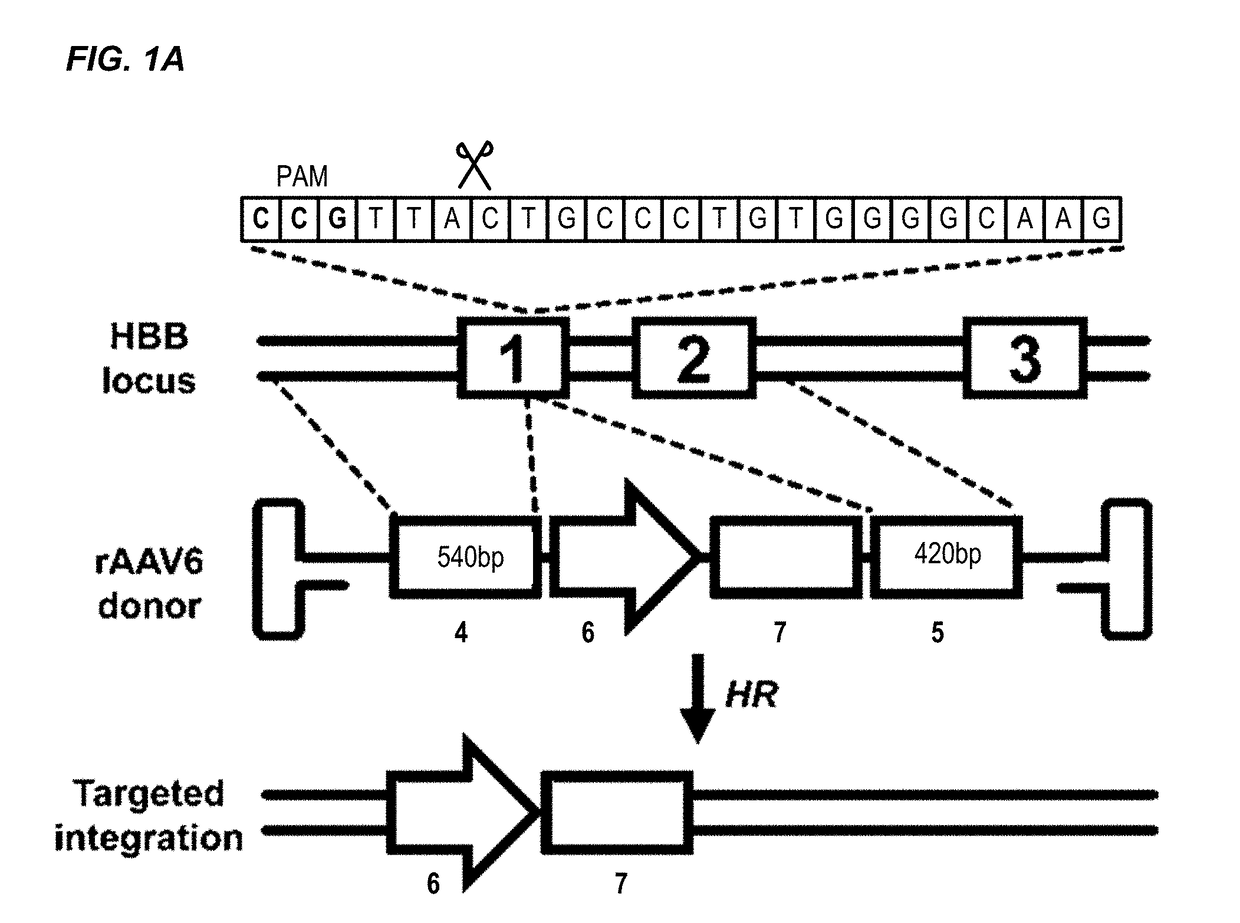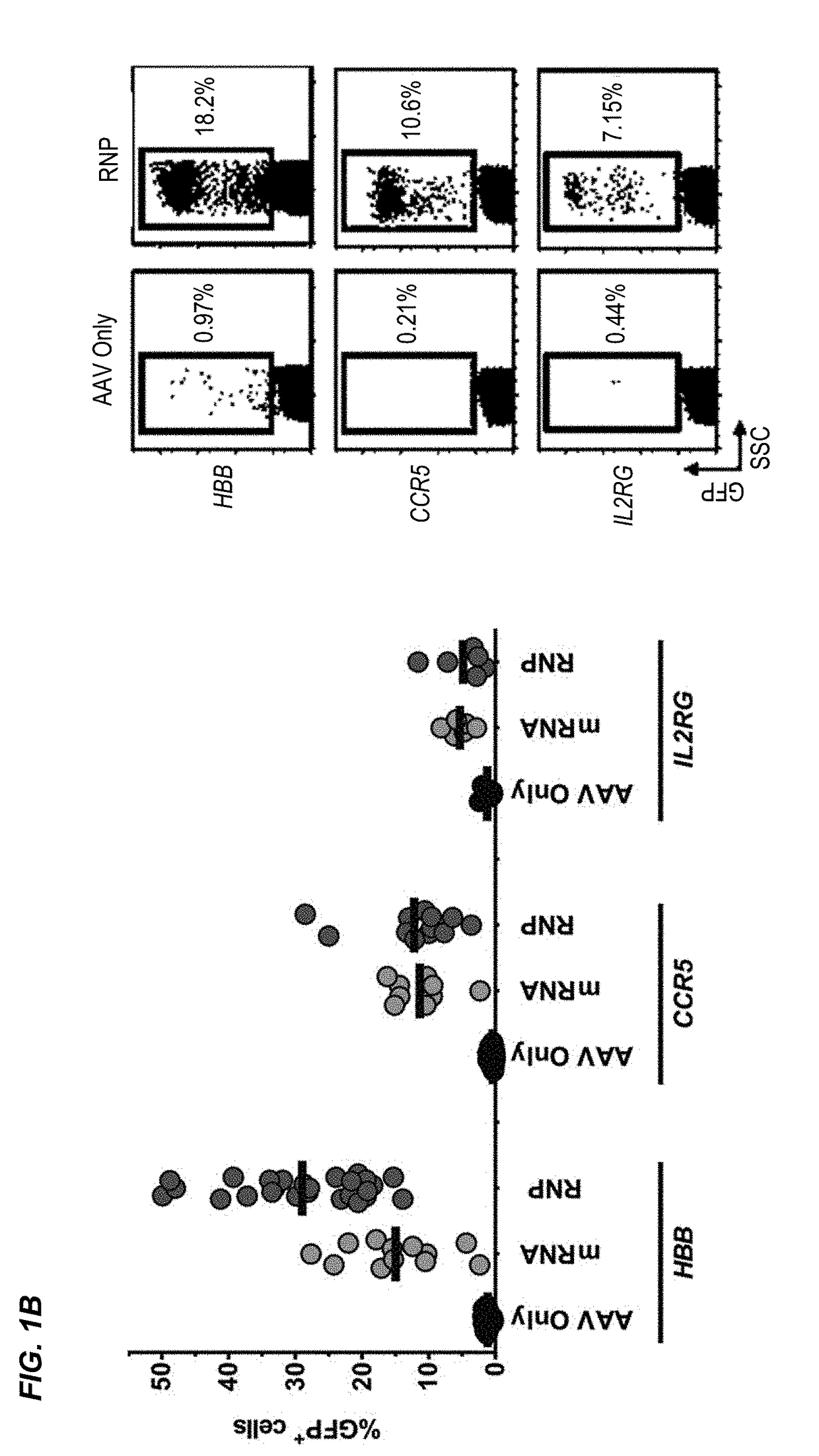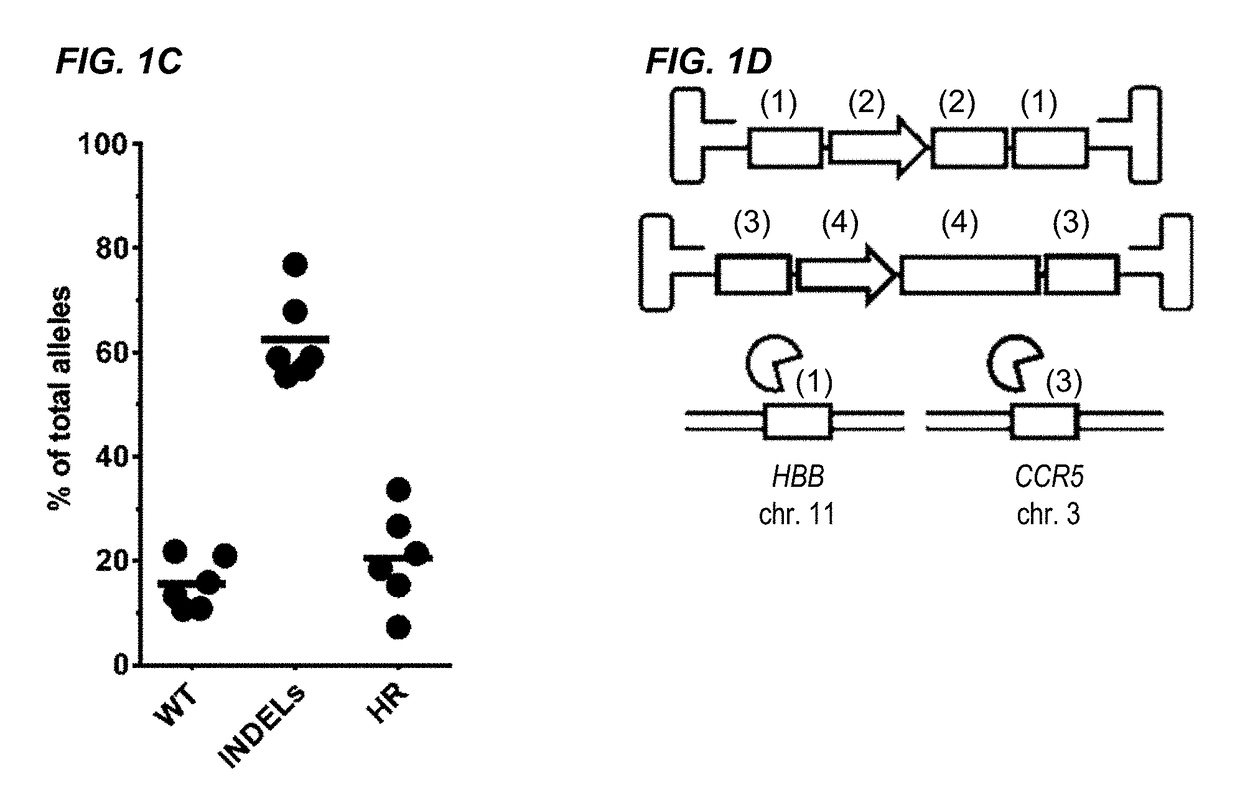Nuclease-Mediated Genome Editing of Primary Cells and Enrichment Thereof
a technology of primary cells and nucleases, applied in the field of nuclease-mediated genome editing of primary cells, can solve the problem of high frequency of edited cells following transplantation into immunodeficient mi
- Summary
- Abstract
- Description
- Claims
- Application Information
AI Technical Summary
Benefits of technology
Problems solved by technology
Method used
Image
Examples
example 1
iting by Homologous Recombination Using CRISPR / Cas9 and rAAV6 in Hematopoietic Stem and Progenitor Cells with Enrichment and Multiplexing
[0250]Precise nuclease-mediated gene modification via homologous recombination (HR) in hematopoietic stem and progenitor cells (HSPCs) has the power to reveal gene-function relationships and potentially transform curative genetic therapies. While using chemically modified sgRNAs dramatically enhanced the activity of the CRISPR / Cas9 system in HSPCs, translating these high efficiencies into elevated HR frequencies has remained challenging. By combining delivery of Cas9 protein complexed with chemically modified sgRNAs with transduction of a donor via recombinant adeno-associated viral vectors, serotype 6 (rAAV6) into HSPCs, high frequencies of HR-mediated genome editing were achieved at three different loci. Importantly, a distinct shift from episomal to chromosomal reporter transgene expression resulting from successful HR allowed for early identifi...
example 2
in Gene Targeting in Human Hematopoietic Stem Cells Using Cas9 Ribonucleoprotein and rAAV6
[0288]The β-hemoglobinopathies including sickle cell disease (SCD) and β-thalassemia (β-thal) affect millions of people worldwide1. SCD and β-thal are caused by mutations in the β-globin gene (HBB) resulting in either abnormal sickling or severely reduced protein production, respectively. A curative strategy for the β-hemoglobinopathies would be ex vivo HBB gene correction in patient-derived hematopoietic stem and progenitor cells (HSPCs) followed by autologous hematopoietic stem cell transplantation (auto-HSCT). This example describes the first CRISPR / Cas9 gene-editing platform for achieving homologous recombination (HR) at the HBB gene in long-term repopulating HSCs (LT-HSCs) derived from mobilized peripheral blood. In this example, electroporation of Cas9 protein complexed with chemically modified sgRNAs was combined with delivery of a HR donor by recombinant adeno-associated viral vectors, ...
example 3
iting by Homologous Recombination in Human Mesenchymal Stromal Cells (MSCs) Using rAAV6 and Chemically Modified sgRNAs
[0376]This example demonstrates that the HR-mediated gene targeting and enrichment methods described in Examples 1 and 2 can be used to target MSCs and enrich for a population of targeted MSCs. In particular, FIG. 41A shows primary MSCs from two different sources were targeted at the HBB safe harbor locus with median efficiencies of 18.05% in fetal bone marrow (BM)-MSCs and 19.40% in umbilical cord blood (UCB)-MSCs. Both values were significantly higher than those of controls which were only transduced with donor AAV6. FIG. 41B shows that insertions and deletions can be created in MSCs at two different safe harbor loci, HBB and CCR5, using MS-modified guide RNA and Cas9 mRNA. FIGS. 41C and 41D show that targeted MSCs still maintain surface marker expression and morphology of MSCs, indicating that the gene targeting and enrichment methods described herein did not alte...
PUM
| Property | Measurement | Unit |
|---|---|---|
| time | aaaaa | aaaaa |
| concentration | aaaaa | aaaaa |
| volume | aaaaa | aaaaa |
Abstract
Description
Claims
Application Information
 Login to View More
Login to View More - R&D
- Intellectual Property
- Life Sciences
- Materials
- Tech Scout
- Unparalleled Data Quality
- Higher Quality Content
- 60% Fewer Hallucinations
Browse by: Latest US Patents, China's latest patents, Technical Efficacy Thesaurus, Application Domain, Technology Topic, Popular Technical Reports.
© 2025 PatSnap. All rights reserved.Legal|Privacy policy|Modern Slavery Act Transparency Statement|Sitemap|About US| Contact US: help@patsnap.com



